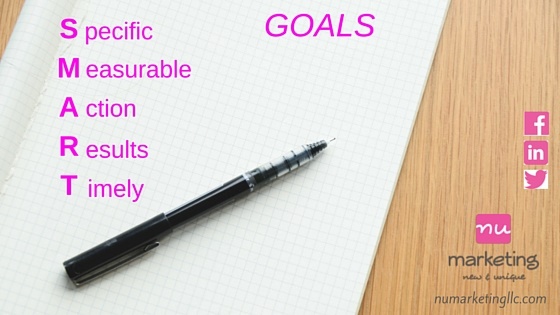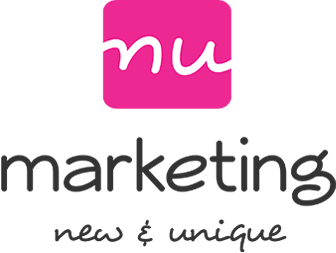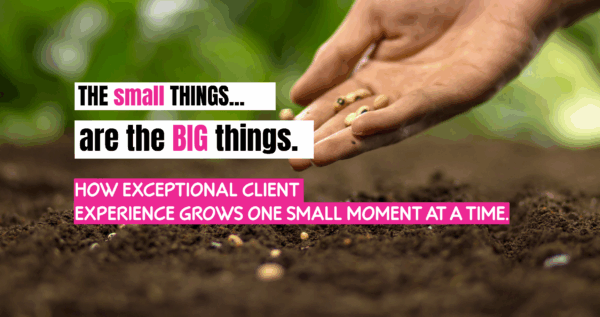
This is a 4-part series. Click here to read Part 1.
Building relationships are hard but well worth the effort. As mentioned in a previous blog, you must pick up the phone, type an email, send a text, message someone through LinkedIn, or schedule a meeting. All these things will build on an existing relationship with your existing or past clients. There are some simple steps to take that will help foster and strengthen those existing relationships you have already invested in. It’s easier to sell to someone that knows and trusts you, because that’s over half the challenge when acquiring new work. Don’t bring work in the front door, when work is sneaking out the back door. Client retention is an important part of your business.
Everyone in your firm should and can participate in this effort. Everyone is in sales whether it’s in their title or not. These are not cold calls. Project Managers can and should stay connected with past clients, so they continue to foster those relationships. Although that owner may not design and build another building, their colleagues and peers are asking for design and construction professional referrals. Make sure they are referring you projects.
Here are the steps to staying connected with existing and past clients.
Step 1: Create a list of past and existing clients. This should be relatively easy for your accounting department to produce, at least the company name but maybe not a contact. Color code them and then assign a follow up schedule. Go through your target list and assign monthly, quarterly, twice a year, or yearly to each contact.
For each company you’ve completed projects for, you need to have more than one contact at each company. It’s always good to have two or three contacts in each company you are working with in case someone leaves the firm, you still have a connection at that company.
Step 2: Keep the lines of communication open. You see someone you know at event, workshop, conference, coffee shop, or party. You already have a connection with that person, so continue to ask questions and find out how they are doing. You already have a level of trust built with them. If it’s just saying hello and talking to them for three to five minutes, that’s an accomplishment. More than likely, if you’ve worked with them before, the conversation will last much longer.
Step 3: I’m going to go out on a limb here and say most architects, engineers, and contractors don’t enjoy relationship building and don’t know how to do it. (Don’t kill me. Hear me out.) Remember you have already met them, so you have some idea of their personality. Here are some simple questions to get the conversation going.
- What is the most challenging part of your job?
- What do you need the most help with in your business?
- What are your hobbies outside work?
- What non-profits, community, or charity organizations do you support? Why?
- Are you involved on a board of directors? Tell me about that.
Don’t be scared. Finding common ground is instrumental. You do this by asking questions, but don’t be an interrogator. Be your client’s friend. You are going to be closely working with then for twelve to twenty-four months, sometimes longer, so you need to create that bond. If it’s a past client, you’ve spent this time with them during their project.
Step 4: Listen. You should listen more than you talk. Figure out how you can help that person out. Share information or other contacts that can help them solve their problem in their business. More than likely you can help them or you know someone that can help them. Listen to understand not to answer.
Step 5: Following Up. How often do I follow up, so I’m not annoying? This can be tricky sometimes. For an existing client, you are probably talking to them once a week and checking in with them to see how their project is going. If you are in between projects, you should contact them quarterly. This can be taking them to lunch, sending them a personal handwritten note, inviting them to an event, sending an article relevant to their business, or just picking up the phone to see how they are doing and what’s going on in their business/industry. Based on the relationship, it can more often but definitely not less often. Time flies by pretty quickly, so your clients don’t realize it’s been three or four months when you reach out them.
I call on my past clients at a minimum four times a year, whether it be an email, lunch, coffee, or a handwritten note. I have also set up a monthly email newsletter that gives them information about strategic marketing advice. I’m not trying to selling anything but just provide valuable information. (Just like this blog.) I am reminding them I’m here to help them. I haven’t ever heard any of my past clients say, “Quit calling me and asking me about my business.” It shows you care. That’s what relationships are all about. People appreciate that you care about them.
Step 6: It’s imperative that you stay in contact with existing and past clients. For existing clients, you need to gauge the project and how everything is going. Ask them how your firm can improve its service or what you can do to add additional value. Existing clients are usually easiest, because you are already talking to them about their current project. For past clients, connect with them to see how their business is doing, addressing current business and industry challenges. You learn a lot by listening (Step 3). Find ways to add value by offering your knowledge and resources to help solving one of their business problems. If you continue to be a resource for them, they will use you for future projects and possibly refer you to others. Don’t forget to ask if they know of others who are designing and building facilities. If you don’t ask, then you might miss out on a referral opportunity.
Step 7: Keep track of your progress. The frequency of reaching out will depend on what makes sense for each client. You can put this in a customer relationships management (CRM) system or spreadsheet. Use what is easy and what you will use. (Sample of Business Development Worksheet)
I had a mentor tell me, “I make one call a day to keep my business going.” That’s only 240 calls a year. (48 weeks times 5 business days) (This means you are vacationing or taking time off 4 weeks out of the year. Yes, do it! You’ll be a better owner, leader, manager, spouse, friend, parent, and mentor.) This can also mean running into someone at an event, sending an email or LinkedIn message, or having lunch. All of these things strength and build your professional relationships.
Step 8: Accountability: Keep yourself accountable. It’s a cliché but SMART goals (Smart, Measurable, Action, Results, and Timely) will help you stay focused on your business development goals. Monitor your progress and keep track of it in your CRM or spreadsheet. You’ll be amazed of how strong your relationships get and how business will increase by these efforts. You can then confirm your hard work is paying off.
Utilize these eight steps to strength relationships with past and existing clients. Take the time to focus on this in your business. It’s easier to sell something to someone who already knows, likes, and trusts you, so take those relationships to the next level to continue bringing work in the door. Don’t let it sneak out the back door.



